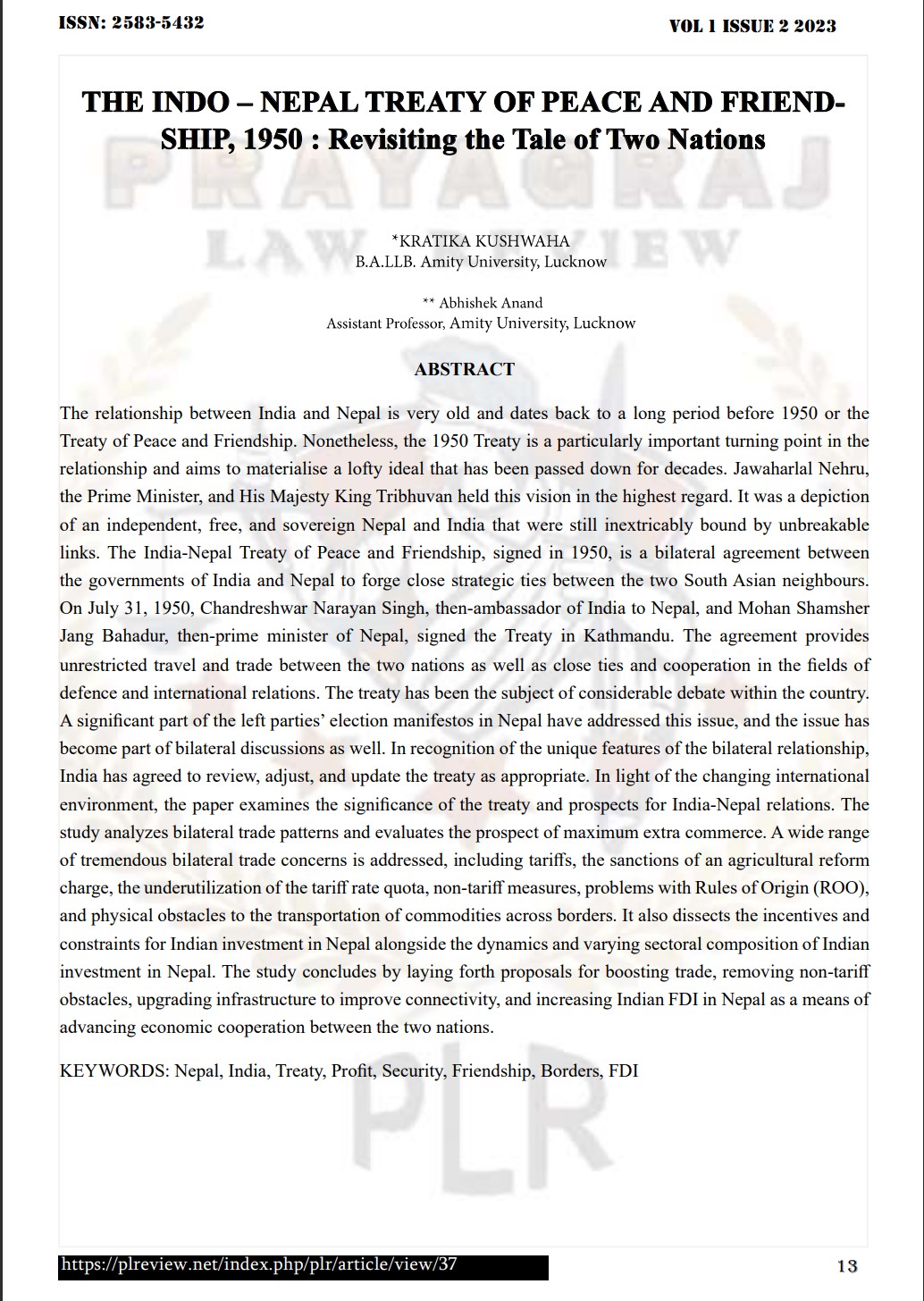THE INDO – NEPAL TREATY OF PEACE AND FRIENDSHIP, 1950 : : Revisiting the Tale of Two Nations

Published 2023-07-12
Keywords
- KEYWORDS: Nepal, India, Treaty, Profit, Security, Friendship, Borders, FDI
How to Cite
Copyright (c) 2023 Prayagraj Law Review

This work is licensed under a Creative Commons Attribution-NonCommercial-ShareAlike 4.0 International License.
Abstract
ABSTRACT
The relationship between India and Nepal is very old and dates back to a long period before 1950 or the Treaty of Peace and Friendship. Nonetheless, the 1950 Treaty is a particularly important turning point in the relationship and aims to materialise a lofty ideal that has been passed down for decades. Jawaharlal Nehru, the Prime Minister, and His Majesty King Tribhuvan held this vision in the highest regard. It was a depiction of an independent, free, and sovereign Nepal and India that were still inextricably bound by unbreakable links. The India-Nepal Treaty of Peace and Friendship, signed in 1950, is a bilateral agreement between the governments of India and Nepal to forge close strategic ties between the two South Asian neighbours. On July 31, 1950, Chandreshwar Narayan Singh, then-ambassador of India to Nepal, and Mohan Shamsher Jang Bahadur, then-prime minister of Nepal, signed the Treaty in Kathmandu. The agreement provides unrestricted travel and trade between the two nations as well as close ties and cooperation in the fields of defence and international relations. The treaty has been the subject of considerable debate within the country. A significant part of the left parties' election manifestos in Nepal have addressed this issue, and the issue has become part of bilateral discussions as well. In recognition of the unique features of the bilateral relationship, India has agreed to review, adjust, and update the treaty as appropriate. In light of the changing international environment, the paper examines the significance of the treaty and prospects for India-Nepal relations. The study analyzes bilateral trade patterns and evaluates the prospect of maximum extra commerce. A wide range of tremendous bilateral trade concerns is addressed, including tariffs, the sanctions of an agricultural reform charge, the underutilization of the tariff rate quota, non-tariff measures, problems with Rules of Origin (ROO), and physical obstacles to the transportation of commodities across borders. It also dissects the incentives and constraints for Indian investment in Nepal alongside the dynamics and varying sectoral composition of Indian investment in Nepal. The study concludes by laying forth proposals for boosting trade, removing non-tariff obstacles, upgrading infrastructure to improve connectivity, and increasing Indian FDI in Nepal as a means of advancing economic cooperation between the two nations.
